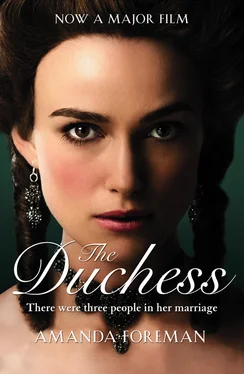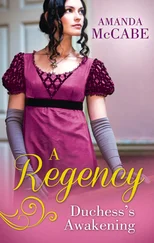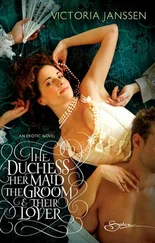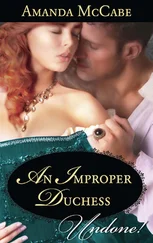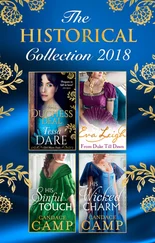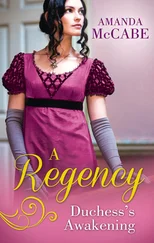*In 1719 the Duke of Richmond, finding himself unable to meet his obligations, paid off his debts by agreeing to have his eighteen-year-old heir married to the thirteen-year-old daughter of the Earl of Cadogan. The ceremony took place almost immediately, after which the girl was returned to the nursery and did not see her husband again until she was sixteen.
2 Fashion’s Favourite 1774–1776
The heads of Society at present are the Duchess of Devonshire, Duchess of Marlborough, Duchess of Bedford, Lady Harrington, and Co. etc.
Morning Post , Saturday 29 July 1775
The excess to which pleasure and dissipation are now carried amongst the ton exceeds all bounds, particularly among women of quality. The duchess of D—e has almost ruined her constitution by the hurrying life which she has led for some time; her mother, Lady S—r has mentioned it with concern to the Duke, who only answers, ‘Let her alone – she is but a girl.’
Morning Post , Monday 11 March 1776
THREE DAYS after the wedding the Duke was spotted with his drinking companions trawling the pleasure gardens of Ranelagh at Chelsea. He provoked more gossip when he turned up four hours late for his presentation at court with Georgiana. All newly married couples were required to present themselves to the Queen at one of her twice-weekly public audiences at St James’s Palace, known as ‘Drawing Rooms’. ‘The Drawing-room was fuller than ever I saw it,’ a witness recorded, ‘excepting that of a Birthday [of the King or Queen], owing, as I suppose, to the curiosity to see the Duchess of Devonshire.’ Georgiana was wearing her wedding dress and ‘look’d very pretty … happiness was never more marked in a countenance than hers. She was properly fine for the time of year, and her diamonds are very magnificent.’ 1 The formidable Lady Mary Coke wondered why the Duke ambled in on his own several hours after Georgiana. He ‘had very near been too late; it was nearly four o’clock when he came into the Drawing-Room’. She watched him for some time and noticed that he showed no emotion. ‘His Grace is as happy as his Duchess,’ she decided charitably, ‘but his countenance does not mark it so strongly.’ 2 Lady Mary’s opinion might have been different had she known about Lady Spencer’s frantic messages to the Duke, imploring him not to be late.
Protocol demanded that Georgiana should pay a call on every notable person in society. For the next three weeks she went from house to house, making polite conversation for fifteen minutes while her hosts scrutinized the new Duchess of Devonshire. In an era when social prestige was itself a form of currency, Georgiana’s visits were highly prized. Lady Mary Coke was not among the 500 whom Georgiana managed to see, which soured her feelings towards her cousin for ever after.
In early July Georgiana set off with the Duke on the three-day journey from London to Derbyshire, to stay at Chatsworth for the summer. The long hours on the road, with no amusement save the view from the window, were the first she had spent alone with her husband. He had hardly addressed a word to her since the day of their marriage. His taciturnity made her nervous and she overcompensated by being excessively lively. There were plenty of scenes for her to point out: a picturesque church here, a field of poppies there – rural villages in England were much more prosperous and better kept than in Europe. A Frenchman on a tour of Britain in 1765 was amazed to see that labourers had shoes on their feet, and instead of grey rags wore ‘good cloth’ on their backs. In contrast to the mud cottages of the peasantry in France, all the dwellings he saw were ‘built of brick and covered with tiles, [and] have glass windows’. 3
The road had dwindled to little more than a bumpy track by the time the cavalcade of wagons and baggage carts reached Derbyshire. Here rocky moorland and fast-flowing waterfalls replaced the green hedgerows and rich hay fields of the south. Daniel Defoe toured England at the beginning of the century and described the countryside around Chatsworth as a ‘waste and howling wilderness with neither hedge nor tree’. But Horace Walpole, visiting the area half a century later, when tastes inclined towards the romantic, was spellbound by its ruggedness. ‘Vast woods hand down the hills,’ he wrote, ‘and the immense rocks only serve to dignify the prospect.’ He admired the terrain; but Chatsworth itself – the ‘Palace of the Peak’ – with its gloomy grandeur and isolated situation, lowered his spirits.
Successive generations of Cavendishes had transformed the original Elizabethan design until it was unrecognizable. In 1686 the first Duke of Devonshire, who was of ‘nice honour in everything, but the paying of his tradesmen’, ordered the architect William Talman to tear down Chatsworth’s pointed turrets and design something more modern in their place. He continued adding to the house until the result was a novel evocation of the English baroque style. Georgiana’s first glimpse was of a rectangular stone box, some 172 feet long and three storeys high, topped by a cornice and balustrade which bore elaborately decorated urns at regular intervals. The façade was a bold design of double-height windows alternating with fluted pilasters, with the Cavendish symbol of interlocking serpents carved along the length of the cornice. As a whole the house and parkland was far more imposing than Althorp, except for one note of light relief in the garden – a tree made of lead. Unsuspecting visitors who stood beneath it were drenched by water spurting from its leaves. Not everyone appreciated the joke: the traveller and diarist Joseph Torrington thought it ‘worthy only of a tea garden in London’.
Torrington also criticized the grounds as lacking in taste, even though they were the work of Capability Brown, and the house as ‘vile and uncomfortable’. 4 He disliked the heavy use of gilt on every available surface; the combination of unpainted wainscoting and inlaid wood floors made the rooms appear dark even in the middle of the day. By the 1770s Chatsworth had an old-fashioned feel; its layout, which followed the seventeenth-century practice of linking public and private rooms along a single axis, was inconvenient and impractical; newer houses had their family apartments entirely separate from their entertaining rooms. 5 But Chatsworth was meant to be more than a family home. Its sumptuous rooms, with their classical wall paintings and triumphant gods staring down from the ceilings, performed a public function. Their purpose was to inspire awe among the lower orders who trooped round on Public Days, and respect – as well as envy – among the aristocracy. Comfort was a secondary consideration. The dining room could easily accommodate over a hundred but – as Georgiana discovered – there were only three water closets in the entire house.
She was not alone with the Duke for long. The Spencers came to stay for an extended visit, bringing with them her sister Harriet and an assortment of pets, favourite horses and servants. They came in part to provide Georgiana with the support and guidance she desperately needed. The Duke’s brothers and uncles were already there to check on her behaviour as the new Duchess and chatelaine of Chatsworth. Georgiana was on show from the moment she stepped out of her carriage. Aristocratic life in the eighteenth century had little in the way of privacy: almost every activity took place before an audience of servants. Rank determined behaviour, and the social pressure on Georgiana to remain ‘within character’ was intense. She was now the wife of one of the most powerful men in the country. Everyone – from the staff assembled outside Chatsworth to welcome her on her arrival, to the neighbours who came to pay their respects, to the people who met her at public functions, saw her from afar, or read about her in the papers – expected her to know precisely what to say and how to perform.
Читать дальше
